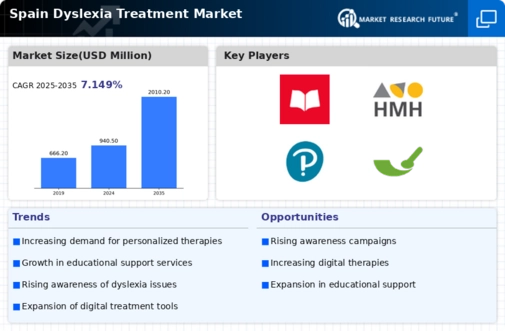The Spain Dyslexia Treatment Market has seen a growing interest and competition among players aiming to provide effective solutions for individuals with dyslexia. With increasing awareness about learning disabilities and the importance of early intervention, there is a vibrant landscape of products and services catering to this market. Various stakeholders, including educational services, technology providers, and content creators, are focusing on innovative approaches that include specialized tutoring, adaptive learning software, and engaging educational materials.
The market is characterized by a combination of established companies and new entrants vying to capture share through differentiated offerings that address the unique needs of dyslexic learners. Lexia Learning stands out in the Spain Dyslexia Treatment Market for its evidence-based approaches to literacy education. With its suite of adaptive learning solutions aimed at improving reading skills, Lexia Learning offers tailored programs that respond in real time to the needs of individual students, making it a valuable player in this specialized field. The company's strengths lie in its commitment to personalized learning experiences, which are crucial for children with dyslexia.
By integrating comprehensive assessment tools with targeted interventions, Lexia Learning effectively supports educators and parents in catering to the requirements of their students. Its successful implementation in various educational institutions across Spain further emphasizes its reputation as a leader in enhancing literacy among those facing dyslexia.Scholastic has made significant strides in the Spain Dyslexia Treatment Market by providing a wide range of resources aimed at supporting literacy development among dyslexic learners.
Their portfolio includes innovative books, instructional materials, and digital platforms designed to engage students and facilitate learning. Within this market, Scholastic's strengths lie in its extensive experience in educational publishing, commitment to high-quality content, and the ability to adapt products to local needs. The company has also been active in forming partnerships and collaborations with schools in Spain, enhancing its reach and impact.
In addition to its product offerings, Scholastic continues to explore strategic mergers and acquisitions to expand its capabilities and align more closely with the educational standards and requirements of the Spanish market. This positions Scholastic as a robust entity in the economic landscape of dyslexia treatment and literacy education.














